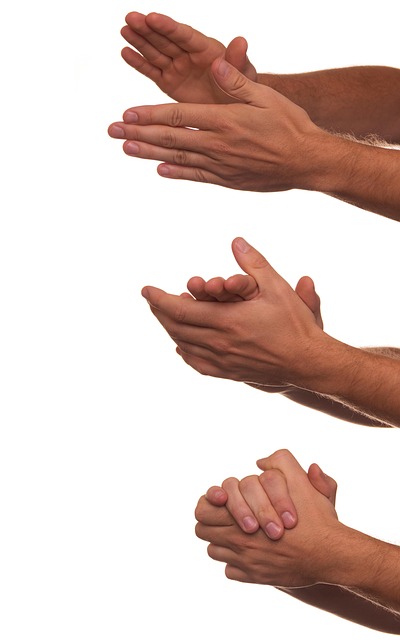
Category: AI IT Support Assistant for Technical Troubleshooting
AI IT Support Assistant for Technical Troubleshooting: Revolutionizing Technical Support
Introduction
In the rapidly evolving digital landscape, Artificial Intelligence (AI) is transforming various industries, and technical support is no exception. The concept of an AI IT Support Assistant for Technical Troubleshooting represents a significant leap forward in enhancing customer service, streamlining operations, and improving efficiency within the IT sector. This article aims to provide a comprehensive exploration of this cutting-edge technology, its applications, impact, and potential challenges. By delving into each aspect, readers will gain valuable insights into how AI is reshaping technical support and its profound implications for businesses and users worldwide.
Understanding AI IT Support Assistant for Technical Troubleshooting
Definition and Core Components
An AI IT Support Assistant for Technical Troubleshooting is an intelligent software system designed to provide automated or semi-automated assistance in resolving IT-related issues and queries. It leverages advanced machine learning (ML) algorithms, natural language processing (NLP), and knowledge bases to understand user problems, offer solutions, and guide users through troubleshooting steps.
The core components of such an assistant typically include:
-
Natural Language Processing (NLP): Enables the system to interpret human language, allowing users to describe their issues in plain text or voice. NLP facilitates the extraction of relevant information from user queries.
-
Knowledge Base: A vast repository of structured and unstructured data containing solutions, troubleshooting guides, FAQs, and technical documentation. This knowledge base is continuously updated and expanded upon.
-
Machine Learning (ML) Algorithms: These algorithms learn from user interactions and feedback to improve their performance over time. ML models can predict potential issues, recommend solutions, and adapt to new technologies and trends.
-
Automated Troubleshooting: AI assistants can automatically diagnose common issues by analyzing system logs, network traffic, or user-provided data, offering immediate solutions without human intervention.
-
Adaptive Learning and Personalization: They learn user preferences and behaviors, providing personalized support and tailored recommendations over time.
Historical Context and Evolution
The idea of AI-driven technical support has been in development for decades, but recent advancements in NLP and ML have propelled it into the spotlight. Early systems often relied on rule-based systems and expert systems, which had limitations in handling complex queries. With the advent of deep learning and vast data availability, modern AI assistants have evolved to become more sophisticated and versatile.
Key milestones in this evolution include:
-
1990s: Rule-based chatbots and interactive voice response (IVR) systems were introduced, offering basic support but lacking contextual understanding.
-
2010s: The rise of deep learning and NLP advancements enabled more natural language interactions and context-aware responses.
-
Present Day: AI assistants now employ transformer models like BERT and GPT, allowing for advanced language understanding, generation of human-like text, and improved problem-solving capabilities.
Global Impact and Trends
International Influence
The adoption of AI IT Support Assistants is a global phenomenon, with organizations across industries recognizing their potential to enhance customer satisfaction, reduce costs, and improve operational efficiency. According to a report by Market Research Future (MRFR), the global AI in IT market size was valued at USD 7.8 billion in 2021 and is projected to grow at a CAGR of 35.4% from 2022 to 2029.
Regional Trends
-
North America: Early adopters like Microsoft, Google, and Amazon have led the way in AI research and development, driving innovation in conversational AI and intelligent support systems.
-
Europe: Focus on data privacy and ethical AI has influenced the development of robust regulatory frameworks, ensuring that AI assistants adhere to strict standards.
-
Asia Pacific: Rapid digital transformation in countries like China and Japan has fueled the adoption of AI, with businesses investing heavily in smart assistance technologies.
-
Latin America and Middle East: These regions are witnessing growing interest in AI for technical support, driven by the need to improve customer service and reduce operational costs.
Economic Considerations
Market Dynamics
The market for AI IT Support Assistants is experiencing significant growth, primarily due to:
-
Digital Transformation: Organizations are increasingly adopting cloud computing, IoT, and other emerging technologies, creating a larger surface area for potential technical issues.
-
Customer Expectations: Modern consumers expect instant, personalized support, driving the need for advanced AI solutions.
-
Cost Efficiency: AI assistants can handle a large volume of simple to moderately complex queries, reducing the burden on human IT support staff and associated costs.
Investment Patterns
Companies across sectors are investing in AI technical support solutions, with a particular focus on:
-
Cloud-based AI Platforms: These platforms offer scalable and flexible solutions, enabling businesses to integrate AI into their existing IT infrastructure easily.
-
Customized AI Solutions: Many organizations are developing tailored AI assistants that align with their unique business needs and customer interactions.
-
Research and Development (R&D): Major tech companies and startups are allocating substantial resources to R&D, leading to rapid innovation in AI technologies for technical support.
Technological Advancements
Notable Innovations
-
Transformer Models: The development of transformer architectures like BERT and GPT has revolutionized NLP, enabling AI assistants to understand complex queries, generate human-like responses, and perform sophisticated problem-solving tasks.
-
Multimodal Learning: AI assistants are now incorporating visual and audio data into their learning process, allowing them to interpret user issues from multiple modalities, such as screenshots or voice commands.
-
Transfer Learning: This technique enables AI models to leverage knowledge gained from one task and apply it to another, improving performance in specialized domains like cybersecurity or network troubleshooting.
Future Potential
The future of AI IT Support Assistants holds immense promise:
-
Enhanced Context Awareness: Advanced NLP and multimodal learning will enable assistants to understand user contexts better, providing more accurate and relevant support.
-
Integration with AR/VR: Mixed reality technologies can be employed to create immersive troubleshooting experiences, allowing users to interact with virtual representations of their systems.
-
Predictive Maintenance: AI models can analyze historical data and real-time system behavior to predict potential hardware failures, enabling proactive maintenance and reducing downtime.
Policy and Regulation
Key Policies and Frameworks
The development and deployment of AI IT Support Assistants are influenced by various policies and regulations worldwide:
-
Data Privacy Laws: Regulations like GDPR in Europe and CCPA in California require organizations to handle user data securely and transparently, impacting how AI assistants collect and process information.
-
Ethical AI Guidelines: Many countries and international bodies have released guidelines for the ethical development and deployment of AI, emphasizing fairness, transparency, accountability, and user consent.
-
Sector-Specific Regulations: Industries like healthcare (HIPAA) and finance (GLBA) have specific regulations that AI assistants must comply with to ensure data security and privacy.
Impact on Development and Deployment
These policies have led to the creation of robust AI development frameworks that prioritize:
-
Transparency and Explainability: Ensuring that AI models’ decision-making processes are understandable and interpretable, especially in critical areas like healthcare and finance.
-
User Consent and Privacy: Obtaining explicit consent for data collection and ensuring user control over their information.
-
Bias Mitigation: Developing models that minimize bias and ensure fairness in outcomes to prevent discrimination.
Challenges and Criticisms
Main Issues
Despite its potential, AI IT Support Assistants face several challenges:
-
Data Quality and Bias: The accuracy of AI models heavily depends on the quality and diversity of training data. Biased or incomplete datasets can lead to inaccurate or unfair outcomes.
-
Context Understanding: While NLP has advanced significantly, understanding nuanced language, sarcasm, or idiomatic expressions still presents challenges for AI assistants.
-
Technical Limitations: Complex issues may require human expertise and specialized knowledge that current AI systems might not possess.
-
Job Displacement Concerns: There are fears that widespread adoption of AI assistants could lead to job losses in the IT support sector, prompting discussions on reskilling and upskilling.
Proposed Solutions
To address these challenges:
-
Diverse and Robust Data Collection: Organizations should gather diverse data sets from various sources to ensure model accuracy and bias mitigation.
-
Human-in-the-Loop (HITL) Approaches: Implementing HITL strategies allows human experts to intervene when AI assistants encounter complex or ambiguous queries, improving overall system performance.
-
Continuous Learning and Adaptation: AI models should be designed to learn continuously from user interactions, incorporating feedback loops for improvement.
-
Reskilling Initiatives: IT support professionals can benefit from training programs that teach them to work alongside AI assistants, enhancing their skills in areas like data analysis and complex problem-solving.
Case Studies
Successful Applications
Case Study 1: Global Tech Giant’s AI Support Chatbot
A leading technology company implemented an AI chat bot to handle customer queries across multiple product lines. The chatbot utilized NLP and a vast knowledge base to provide immediate solutions for simple issues, reducing the average handling time by 30%. For complex cases, it seamlessly transferred conversations to human agents, ensuring efficient resolution. This hybrid approach improved customer satisfaction and reduced support costs.
Case Study 2: Healthcare AI Assistant
A healthcare organization developed an AI assistant to assist patients with common medical queries and schedule appointments. The system employed NLP to understand user input and utilize a structured knowledge base of medical information. Within six months, the AI assistant handled over 50% of patient inquiries, reducing wait times and improving access to care.
Case Study 3: Enterprise Network Troubleshooting
A large enterprise deployed an AI-driven network monitoring and troubleshooting system. The AI model analyzed network logs and real-time data to predict potential issues, enabling proactive maintenance. This approach significantly reduced downtime, improved network stability, and lowered operational costs.
Future Prospects
Growth Areas
The future of AI IT Support Assistants is poised for significant growth:
-
Enterprise Adoption: Large organizations will increasingly embrace AI assistants to streamline IT operations, reduce costs, and enhance customer service.
-
Personalized Support: Advanced AI models will provide more personalized interactions, adapting to individual user preferences and behaviors over time.
-
Integration with IoT: As the Internet of Things (IoT) continues to expand, AI assistants will play a crucial role in managing and troubleshooting connected devices and systems.
Emerging Trends
Keep an eye out for these emerging trends:
-
Conversational AI Advancements: The evolution of more sophisticated conversational interfaces, enabling natural language interactions with AI assistants.
-
AI-driven Automation: Increased automation of IT processes, from incident management to configuration changes, leading to faster and more efficient operations.
-
Hybrid Support Models: A blend of human expertise and AI capabilities, where human agents oversee and enhance the performance of AI assistants.
Conclusion
The rise of AI IT Support Assistants for Technical Troubleshooting is a transformative force in the IT industry, offering unprecedented opportunities for innovation and efficiency gains. From global tech giants to healthcare providers and enterprises, organizations across sectors are leveraging AI to enhance customer service, reduce costs, and improve operational resilience. While challenges remain, particularly in data quality and ethical considerations, the future prospects for AI-driven technical support are promising. As technology continues to evolve, we can expect even more sophisticated assistants that revolutionize how we interact with and manage our digital world.
FAQ Section
Q: How do AI IT Support Assistants improve customer satisfaction?
A: These assistants provide immediate, personalized support, reducing wait times and resolving issues quickly. Their ability to understand natural language queries enhances the overall user experience.
Q: Can AI assistants replace human IT support professionals?
A: While AI can handle a significant volume of tasks, complex or unique issues may require human expertise. A hybrid approach, where AI assists humans, is likely to be the norm, ensuring high-quality support.
Q: What are the ethical considerations for AI IT Support Assistants?
A: Ensuring data privacy, transparency in AI decision-making, and preventing bias are key ethical concerns. Organizations must adhere to relevant regulations and guidelines to maintain user trust.
Q: How can businesses ensure the accuracy of AI models?
A: Diverse and representative data collection, regular model training, and human oversight are essential for maintaining accuracy. Continuous feedback from users helps improve model performance over time.
Q: What role does AI play in cybersecurity?
A: AI assistants can analyze network traffic and security logs to detect anomalies, predict potential threats, and automate response measures, enhancing the overall security posture of an organization.









